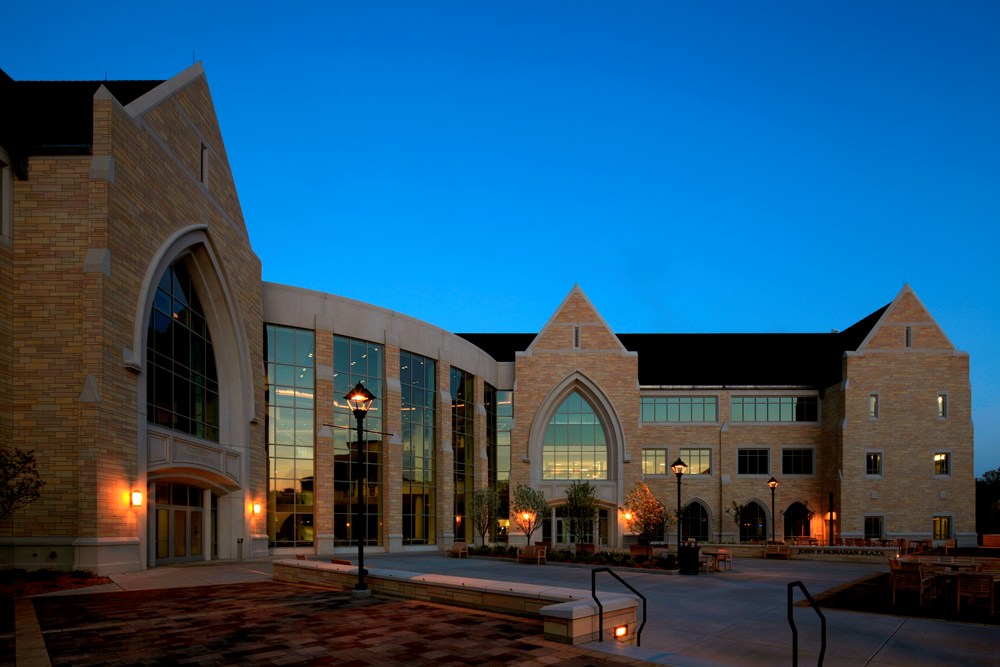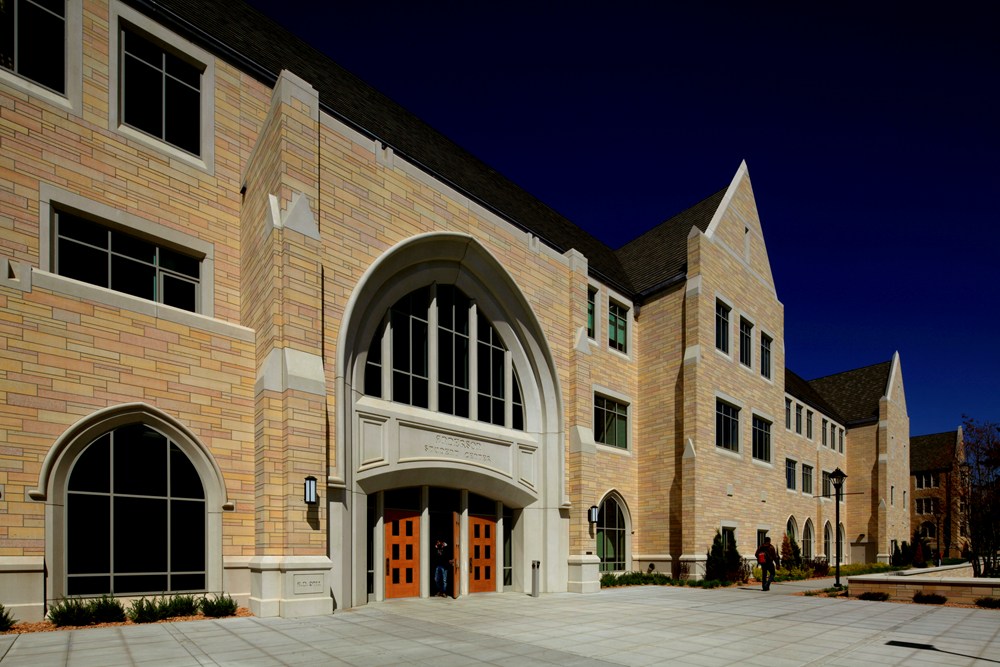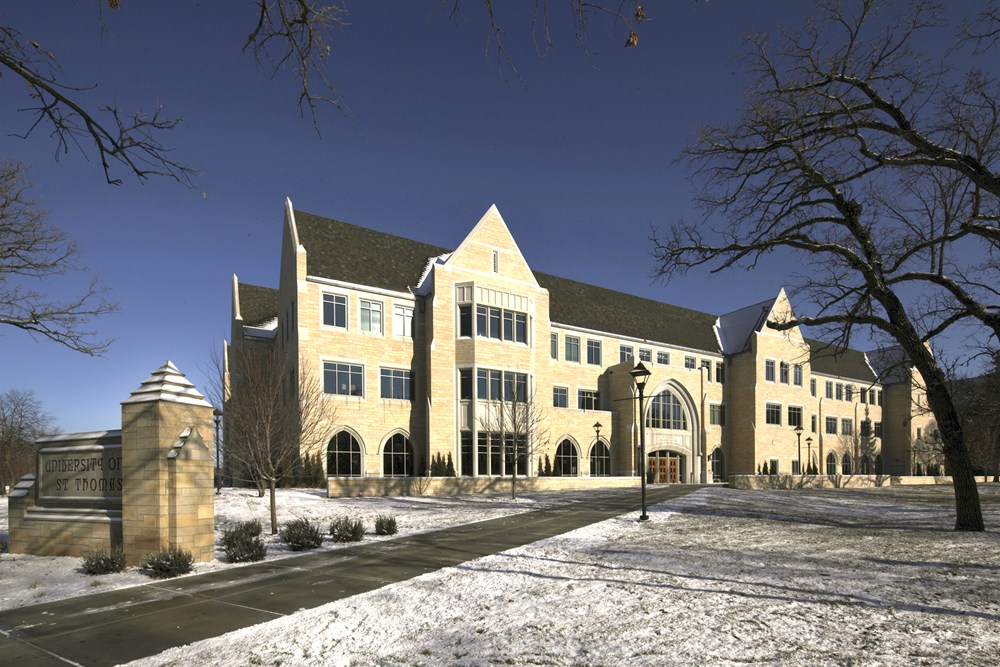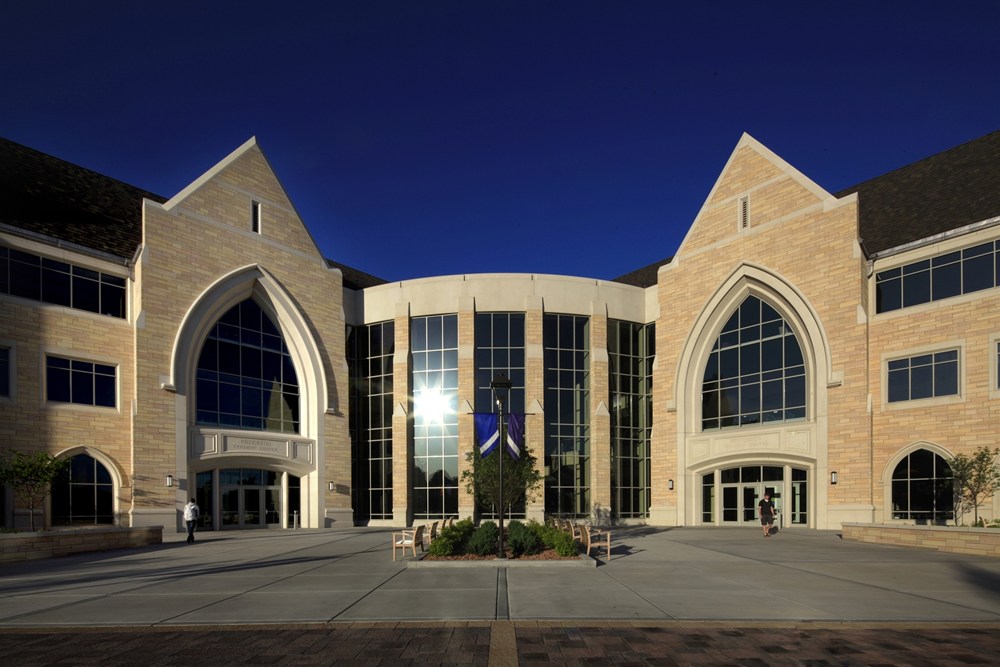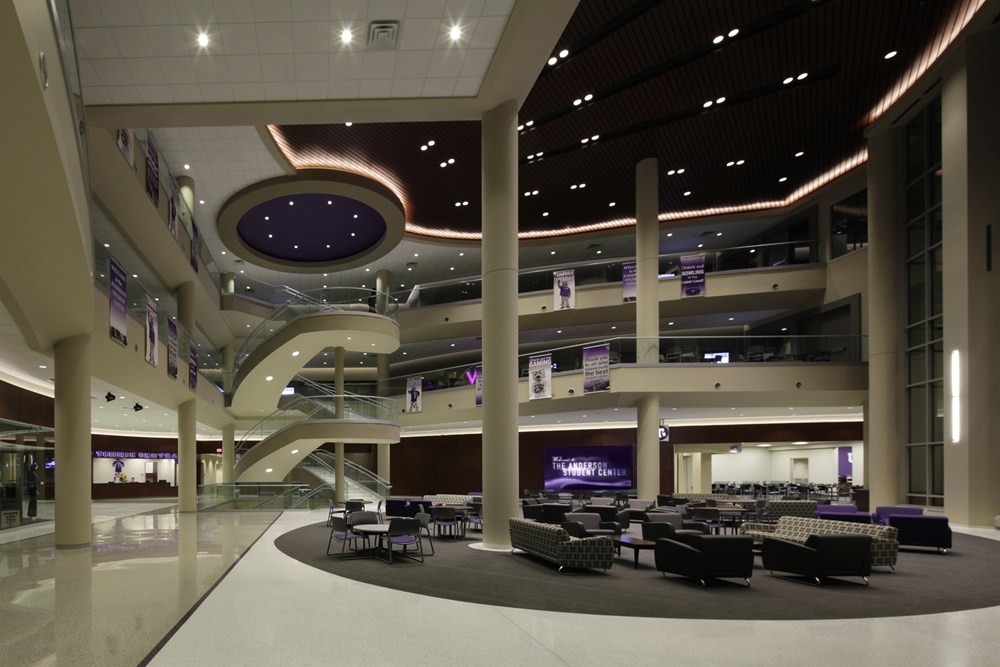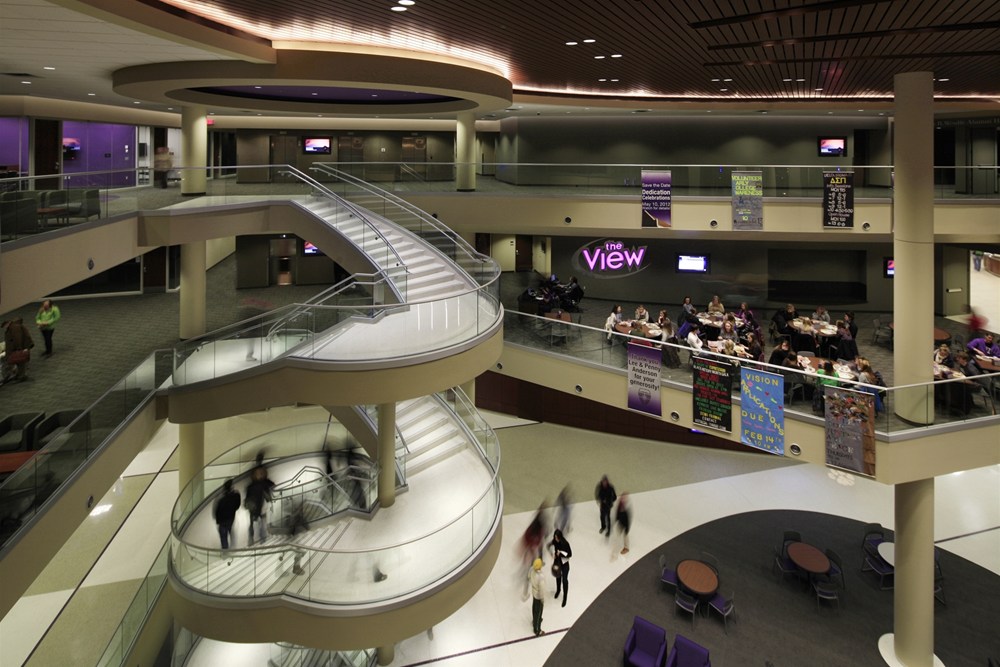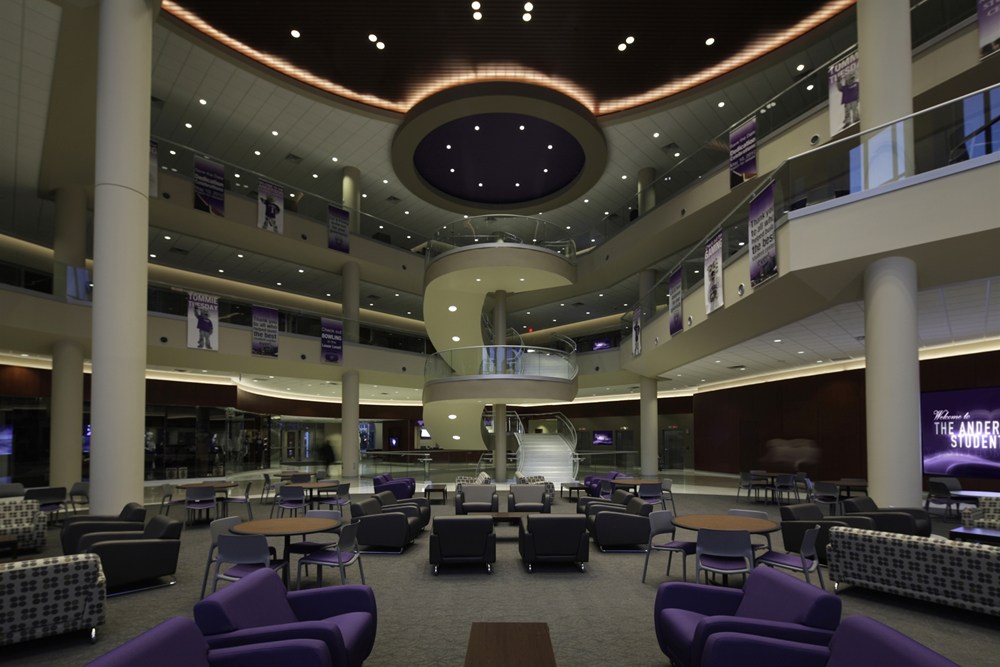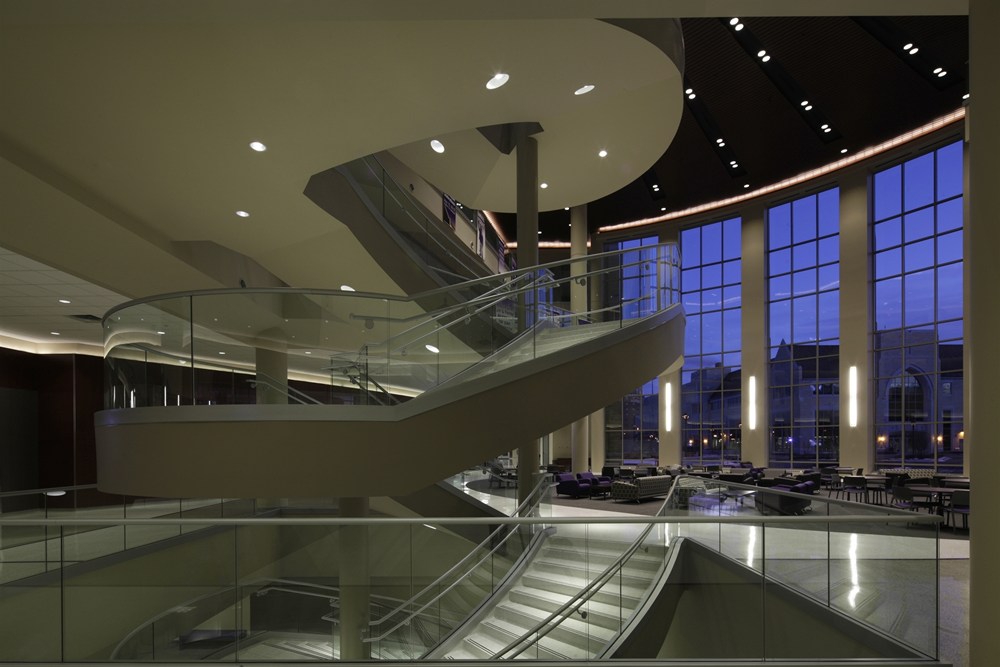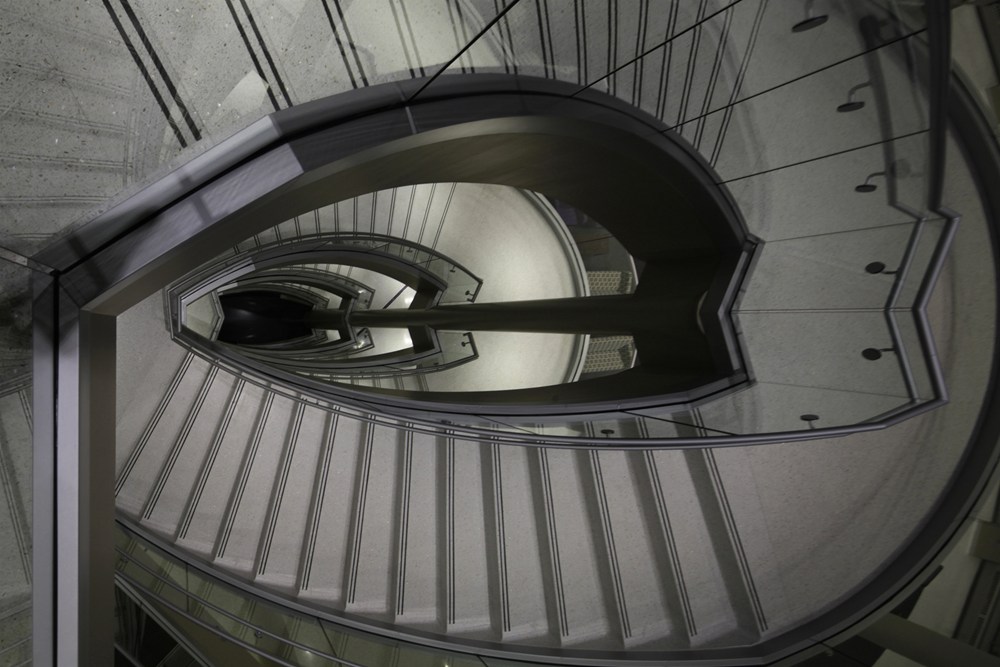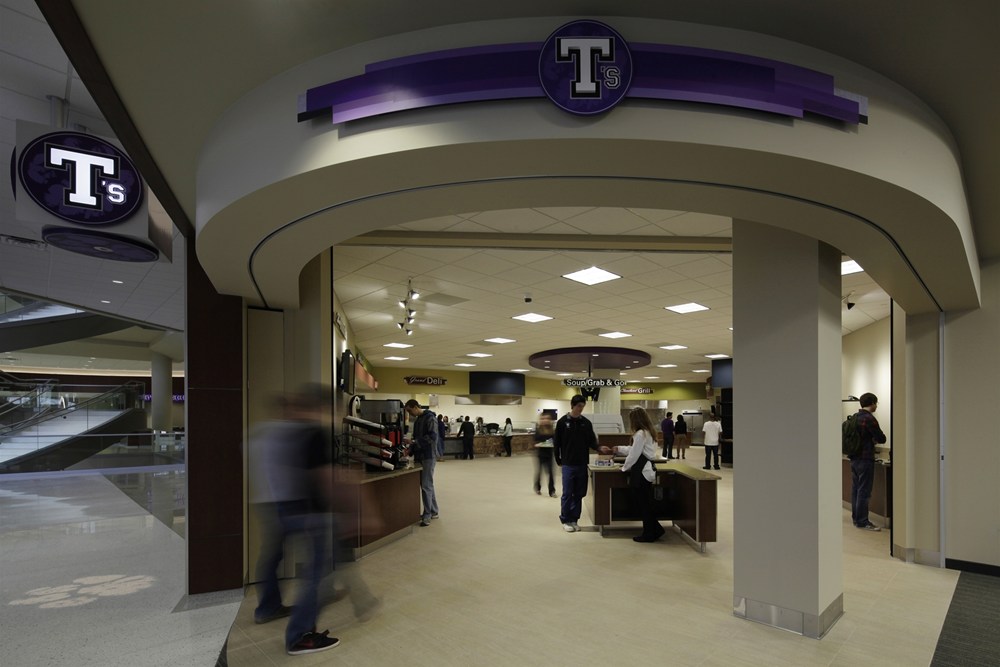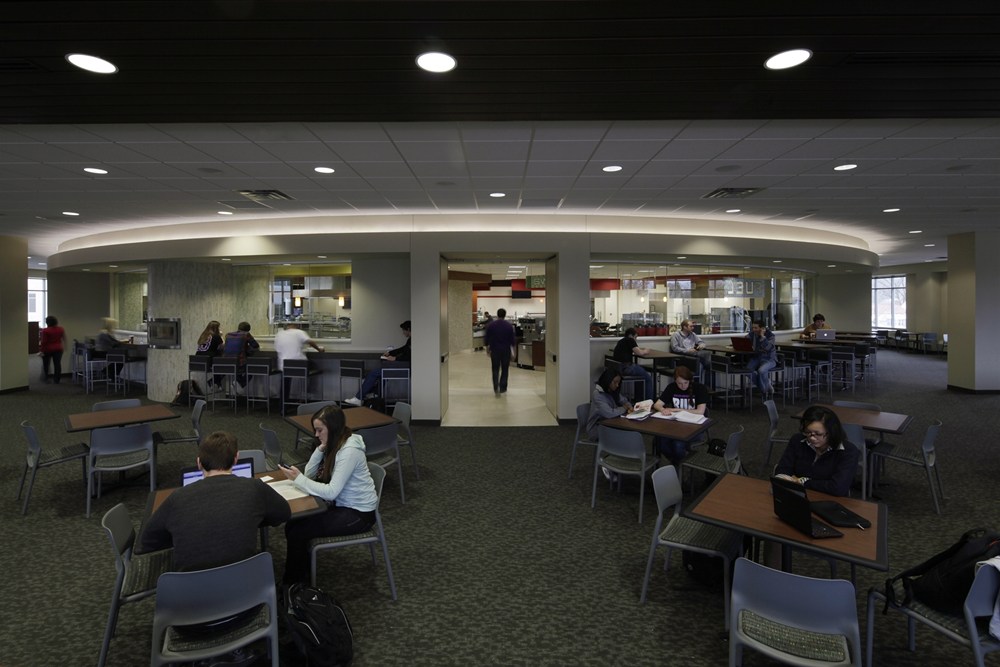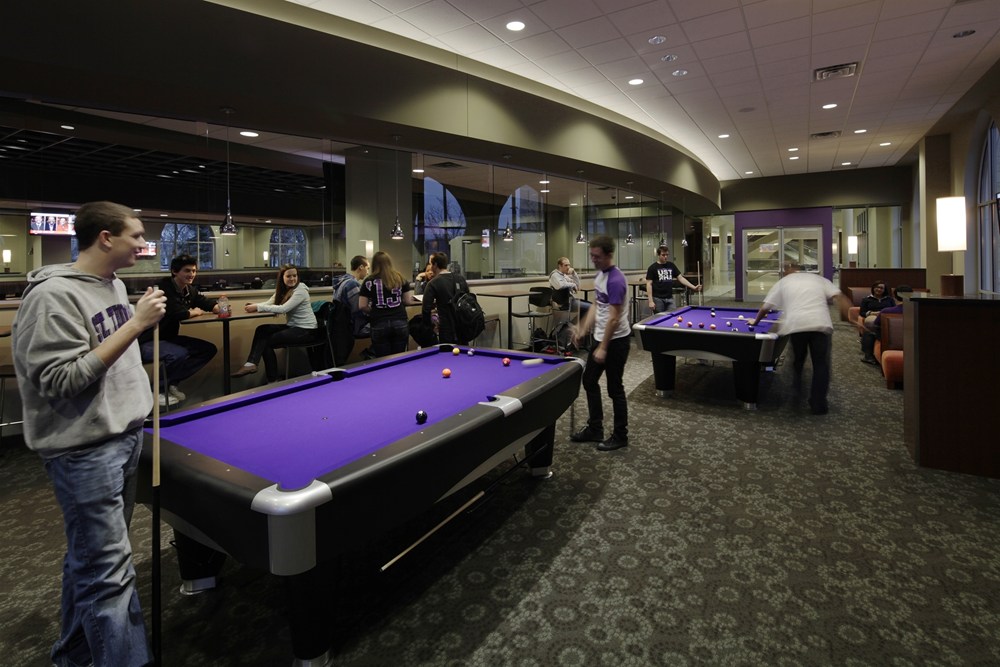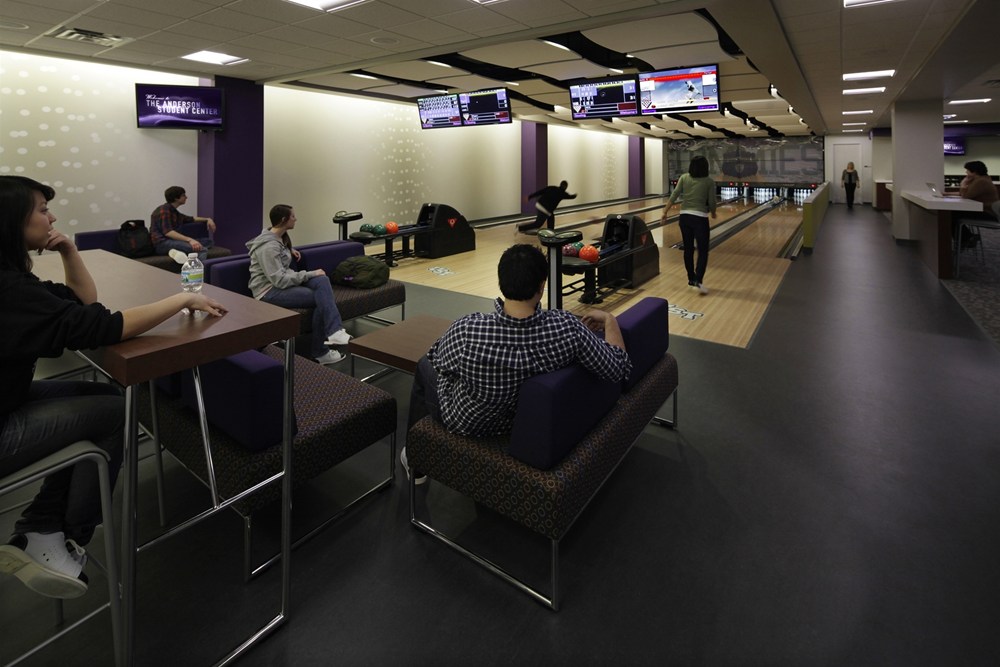Story
The Assignment: Design and Construct the Ultimate University Campus “Living Room”
The building’s large center atrium provides students convenient access to and views of the center’s main venues. This area features a circular staircase and expansive windows that face the main campus artery, commonly referred to as the quad.
As students move out of the atrium, they find an abundance of activities, dining options and student resources, including:
- recreation and games area,
- high-tech bowling center,
- Tommie Shop for gifts and apparel,
- a hair salon and a convenience store,
- main student dining service and
- sports café and a coffee shop.
The building also houses campus resources, student affairs offices and state-of-the-art meeting rooms, as well as 120 parking stalls on the lower level.
Designing to Complement and Prioritizing LEED Certification
It was necessary that the new student center complement the traditional Collegiate Gothic architectural design style of theUniversity of St. Thomas campus. To ensure that this and other design aspirations were considered in the final building plans, Opus used Building Information Modeling (BIM), which allowed the university to conceptualize the building early in the design process and informed key decisions about materials and design elements with its 3-D modeling capabilities.
Embracing a commitment to sustainable construction, together Opus and the University of St. Thomas participated in Xcel Energy’s Energy Design Assistance program, which helps design teams determine the best energy-conservation strategies to incorporate into projects.
Sustainable practices were woven into every aspect of the project, from installing water-efficient plumbing fixtures and energy-efficient glass to using local and regional construction materials. Ultimately, these sustainable construction practices earned the project LEED Gold certification.
